In order to continue maintaining wireless standards to meet contemporary and future needs – the Wi-Fi Alliance has announced Wi-Fi HaLow, the Alliance’s branding for their work developing and promoting wireless networking solutions based on the IEEE 802.11ah standard.
The IEEE 802.11ah standard is a new extension of the very popular and widespread IEEE 802.11-2007 wireless networking standard, providing a new physical layer and MAC layer specification for Wi-Fi networks that can operate in the sub-gigahertz bands at around 900 MHz.
Because of the different propagation characteristics of radio waves at this frequency, this change significantly extends the range of existing Wi-Fi networks that currently operate in the 2.4 GHz or 5 GHz bands, and allows the radio to propagate through walls and obstructions much more effectively. This allows homes and buildings to be comprehensively covered with reliable Wi-Fi connectivity without using a large number of access points, with a probable need for only one access point per building for seamless, reliable coverage even in large buildings.
Having reliable wireless networking connectivity across a whole home or building with minimal infrastructure is particularly attractive for Internet-of-Things, home automation or building management applications, and these IoT applications are the main application area that 802.11ah networks are aimed at enabling. Wi-Fi HaLow opens up new use-cases for Wi-Fi, such as home automation, smart energy networks, wearables, consumer electronics, low-power sensors, and what the Wi-Fi Alliance refers to as the “Internet of Everything”.
IEEE 802.11ah has rebuilt and optimised the physical layer and the MAC layer from the ground up, although the higher network layers remain more consistent with existing versions of the 802.11 standards.
These changes provide extended range, strong improvements in power efficiency, more scalable operation, and an enhanced link budget compared to 2.4 GHz systems. At the same time, however, 802.11ah aims to leverage the established Wi-Fi and IP networking ecosystem where possible, for easy configuration, easy pairing to access points or mobile devices, and connectivity into existing networks and the Internet.
802.11ah supports 4, 8 or 16 MHz of bandwidth, allowing higher data rates depending on the allocated spectrum that is available in different regions, with the low-bandwidth 1 MHz and 2 MHz modes being mandatory and globally interoperable for all devices where this lower bandwidth is realistic. For example, 26 MHz is available in the 900 MHz band in the United States, making these higher-bandwidth modes accessible.
The standard aims to offer a minimum of 150 kbps of throughput with 1 MHz of bandwidth used, or as much as 40 Mbps with 8 MHz of bandwidth. This is obviously less than what we expect from traditional Wi-Fi networks, but the favourable combination of moderate bandwidth, moderately low power consumption and long-range propagation make 802.11ah an attractive competitor with other technologies such as IEEE 802.15.4/6LoWPAN in building automation and IoT applications.
These lower-bandwidth nodes are well suited to low-cost battery operated sensor devices in IoT applications, where a relatively low data rate is required. No power amplifier is required for “home scale” transmission distances, and the minimum data rate of 150 kbps means that IoT sensors transmitting short, lightweight messages can remain in a sleep state most of the time – and wake up for a short period to transmit a burst of sensor data, lowering average power consumption and offering maximum battery life.
Average power consumption in this type of application is also reduced by using more efficient protocols at the MAC layer, such as smaller frame formats, sensor traffic priority, and beaconless paging mode. The MAC is also optimised to scale to thousands of nodes by using efficient paging and scheduled transmissions.
As with existing 802.11 Wi-Fi devices, the work of the IEEE and the Wi-Fi alliance ensures that 802.11ah devices will be interoperable across all the different hardware vendors, with a strong open standardisation process that brings in participation from many industry representatives and stakeholders.
With its focus on embedded and IoT applications such as home automation, 802.11ah is not intended as a general-purpose high-speed wireless networking solution for the home or office. It is likely to deliver significantly reduced speeds compared to familiar 802.11 networks, with speeds in the low tens of megabits per second. This is perfectly sufficient for the typical kinds of intended applications with an IoT focus, however.
The 802.11ah standard is intended to be an attractive competitor to Bluetooth in IoT and consumer electronics applications, offering longer communications range than either Bluetooth or existing Wi-Fi, but with a significantly reduced power consumption compared to familiar 802.11 Wi-Fi solutions on the market at present.
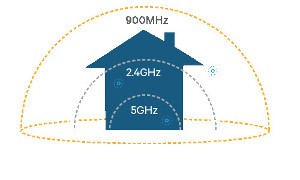 As this technology becomes more available in the market, it’s likely that it will begin to supplant Bluetooth in certain consumer electronics applications, as well as supplanting other wireless standards such as existing Wi-Fi and 802.15.4 networks in the Internet-of-Things domain where relatively long-range communication with a large number of low-bandwidth devices is required.
As this technology becomes more available in the market, it’s likely that it will begin to supplant Bluetooth in certain consumer electronics applications, as well as supplanting other wireless standards such as existing Wi-Fi and 802.15.4 networks in the Internet-of-Things domain where relatively long-range communication with a large number of low-bandwidth devices is required.
Here at the LX Group we have end-to-end experience and demonstrated results in the entire process of IoT product development, and we’re ready to help bring your existing or new product ideas to life. Getting started is easy – click here to contact us, telephone 1800 810 124, or just keep in the loop by connecting here.
LX is an award-winning electronics design company based in Sydney, Australia. LX services include full turnkey design, electronics, hardware, software and firmware design. LX specialises in IoT embedded systems and wireless technologies design.
Published by LX Pty Ltd for itself and the LX Group of companies, including LX Design House, LX Solutions and LX Consulting, LX Innovations.

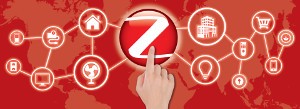
 To help you get started easily, the software development process is simplified through the use of Atmel Studio 7, Atmel’s flagship IDE for their microcontroller products.
To help you get started easily, the software development process is simplified through the use of Atmel Studio 7, Atmel’s flagship IDE for their microcontroller products.
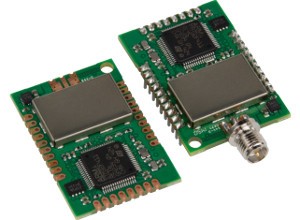
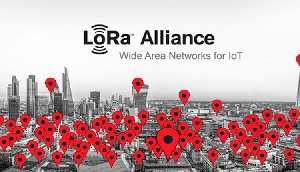 The latter is more flexible, but because it requires the radio receiver to be kept online listening for new downlink messages all the time, this is the most power-inefficient mode compared to the former scenarios where the radio can be powered down. This is another way that the LoRaWAN protocol helps to maintain strong power efficiency in the endpoint devices.
The latter is more flexible, but because it requires the radio receiver to be kept online listening for new downlink messages all the time, this is the most power-inefficient mode compared to the former scenarios where the radio can be powered down. This is another way that the LoRaWAN protocol helps to maintain strong power efficiency in the endpoint devices.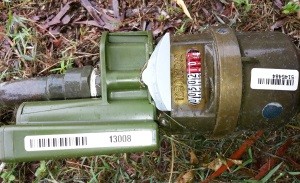 Taggle’s network offers two major areas of use. The first is data acquisition, where small amounts of data can be collected from a very large number of sensors across a wide geographical area. The second valuable use-case is the location of objects within the area covered by the Taggle network.
Taggle’s network offers two major areas of use. The first is data acquisition, where small amounts of data can be collected from a very large number of sensors across a wide geographical area. The second valuable use-case is the location of objects within the area covered by the Taggle network.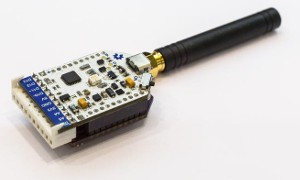 Although the SigFox technology can’t accommodate heavy amounts of Internet data such as streaming media, it is well suited to carrying simple messages in Internet-of-Things and telemetry applications, employing lightweight transport protocols such as MQTT.
Although the SigFox technology can’t accommodate heavy amounts of Internet data such as streaming media, it is well suited to carrying simple messages in Internet-of-Things and telemetry applications, employing lightweight transport protocols such as MQTT. 
